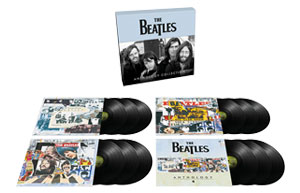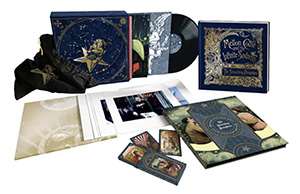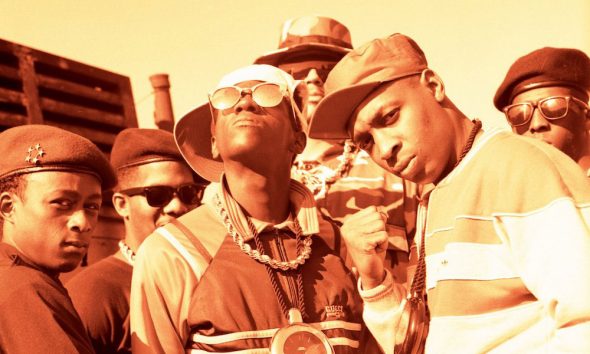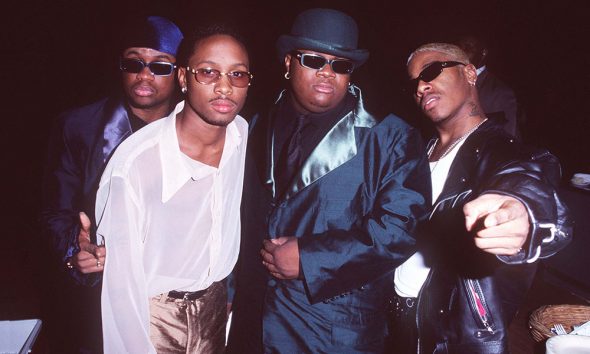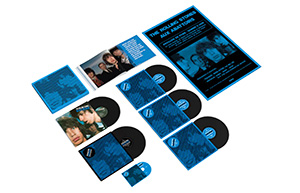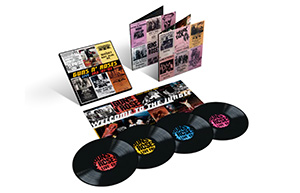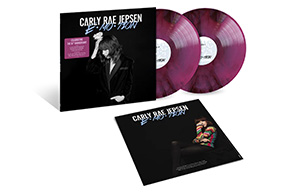The Way They Walk: The Cramps, The Early Years
Alex Chilton called them the ‘greatest rock’n’roll band in the world.’ Who are we to argue?
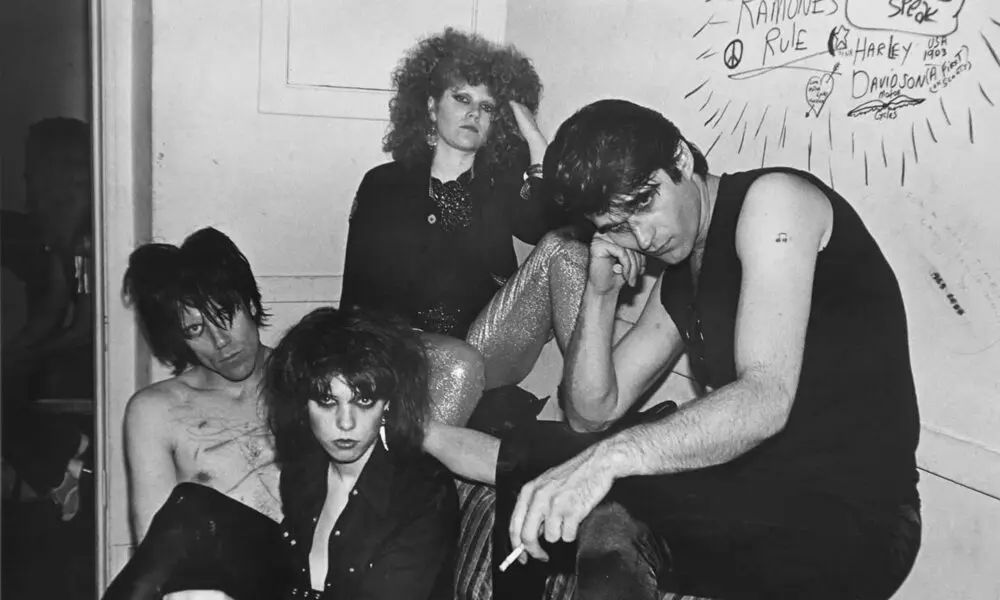
The story of psychobilly pioneers The Cramps begins like something straight out of one of their beloved B-movies.
It was 1972, and singer Lux Interior and guitarist Poison Ivy were both newly enrolled as art students at Sacramento State College. Ivy was hitchhiking from the campus back to her apartment when Lux and a friend picked her up. They compared class choices in the car; Ivy told Lux about a class she was interested in called Art & Shamanism – coincidentally, a pretty neat summary of their future endeavours.
Order The Cramps’ early albums on standard and color vinyl now.
When Lux walked in on the first day of that class, Ivy was thrilled. “I was sending out psychic brainwaves of, like: ‘Sit by me! Sit by me! Sit by me!’” she told The Independent in 1998. “And he did. He came straight to me and sat next to me.” Though Ivy’s powers of psychic persuasion are clearly beyond doubt, earthier motives may have been at play; Lux had it bad for the striking hitchhiker. Ivy told him it was her birthday, so Lux gave her a drawing from his portfolio of a female figure. Two weeks later, they moved in together. Four years later, they changed rock’n’roll forever.
Lux and Ivy
Lux Interior was born Erick Lee Purkhiser on October 21, 1946 in Stow, Ohio. Raised a strict Catholic, his head was turned by a heady mix of his older brother Ron’s record collection, shocking, low-budget movies, madcap local radio DJs, and the anarchic attitude of late-night horror host Ghoulardi. To avoid the Vietnam War draft, he enrolled in California State University, Sacramento, where – in a moment of self-actualisation that would prove prescient – he began calling himself Vip Vop, after an obscure 1963 R&B nugget by vocal duo Marvin & Johnny. He divided his time between acts of petty delinquency (“We stole hubcaps. We stole them just to steal them – we didn’t even know who to sell them to. I remember we stole the hubcaps off the local hearse”) and obsessing over rockabilly, rock’n’roll, blues and country records, the rarer the better.
Kirsty Marlana Wallace was born on February 20, 1953 in San Bernardino, California. Her mom flipped houses; the family moved nine times during her childhood. Rootless and self-sufficient, the young and rebellious Kirsty learnt to make her own fun; her hobbies included using firecrackers to destroy Barbie dolls, dressing the family cat in doll’s clothes and, after a steer from an older brother, teaching herself guitar – excellent preparation for life as the powerhouse behind The Cramps. Though she was already sold on rock’n’roll, an empowering moment came at a Bo Diddley concert. She was transfixed by Diddley’s brilliant and glamorous rhythm guitarist, Norma-Jean Wofford, known as The Duchess. After the show, Kirsty bought a pair of gold lamé pants in tribute to The Duchess. In an echo of the young Erick Lee Purkhiser, she gave herself an otherworldly new identity, Poison Ivy Rorschach. She’d later claim that it was a tribute to either the Batman villain or a single by The Coasters. Then again, she’d also say that the name came to her while tripping on mushrooms after a six-day fast. With The Cramps, details aren’t important; it’s the attitude that counts.
That Lux and Ivy met is empirical evidence of the existence of fate. The lovestruck pair created their own world, fuelled by 50s pop culture and long-deleted rockabilly, R&B and rock’n’roll records, the weirder and more obscure the better. They once drove 2,000 miles from Sacramento to Memphis, Tennessee, after hearing that Sun Records’ Memphis warehouse was selling 7”s for 20 cents apiece. They broke down an hour outside of Memphis, hitchhiked to the warehouse, spent all their money on records and wired for cash to repair their ’61 Chevy Wagon… and buy more records. What else could these two lovestruck originals do but form a band?
The beginning of The Cramps
Before they had any bandmates, they had a name. Keen to evoke the aggression and gang-like feeling of The Kinks, Ivy came up with The Cramps. By this point, Vip Vop had been jettisoned, first in favour of Raven Beauty and finally, Lux Interior, inspired by a series of car commercials that boasted of the “deluxe interiors” of their vehicles.
Inspired by glam-punk sensations New York Dolls and tales of the NYC punk scene emerging from CBGB, Lux and Ivy moved to New York in September 1975. Pride of place in their cramped East 73rd Street living room was a classic jukebox – Lux claimed he paid a guy $5 to carry it up the stairs. Ivy worked various waitress jobs before hanging up her apron to become a dominatrix, which came in handy for stage costumes. Meanwhile, Lux landed a job at Upper East Side record store Musical Maze, where he immediately convinced co-worker Greg Beckerleg to join The Cramps. The following day, Beckerleg (swiftly renamed Bryan Gregory) bought a $25 guitar from a pawn shop and stencilled ‘The Cramps’ on the case. Lux and Ivy were so impressed they didn’t have the heart to tell him they’d wanted him to play bass – a misunderstanding that proved crucial to the band’s sound. Gregory recruited his sister, Pamela (renamed Pam Balam, in a nod to a Flamin’ Groovies song), on drums, and the first Cramps line-up was born.
Over the summer of ’76, The Cramps began rehearsing in the basement of Musical Maze. After a few weeks, Pam was replaced by her roommate, Miriam Linna, a music obsessive whom Lux and Ivy had met a few years previously on a trip to New York and – again, crucially to the band’s early sound – had never played the drums. “Lux handed me a brand-new pair of sticks and pronounced me the world’s greatest drummer,” Linna later wrote, “Just like that. No audition, no test run, no lessons, no suggestions of what to play or how fast.” As Ivy was the only member who could play, it was pointless attempting faithful covers. Instead, they worked out their own versions of their beloved rockabilly and garage rock obscurities with Ivy’s danger-filled, Link Wray-inspired lead lines, Linn’s pounding drums, and Gregory’s fuzzed-up guitar assaults topped off by Lux, snarling and whooping like a fever dream Elvis, dredging up visceral imagery from countless B-movies and long-deleted rockabilly 7”s.
“We wanted to be as shocking, sexy and original as the great culture-changing rock’n’roll pioneers were during the 50s and 60s,” wrote Lux and Ivy in the sleevenotes to the 2004 compilation How To Make A Monster. “Not imitators, but the same kind of rebels that they were in their time.”
The Cramps were already that band in their heads; now they had to prove it to the world. As well as being the world’s best drummer, Miriam was well-connected and convinced old pals The Dead Boys to let The Cramps open for them on the hallowed stage of CBGB in November 1976. They were utterly shambolic, but Peter Crowley, booker for Max’s Kansas City, saw something magical in the out-of-tune chaos. Crowley booked The Cramps to open at Max’s for Suicide, beginning a run of shows at the venue that saw the band win over crowds with their wild showmanship and visceral psychobilly sound.
With their notoriety on the rise, The Cramps finally headlined CBGB, topping the bill over the weekend of July 8-10, 1977, but after over 40 gigs together, the three-night stint marked the end of Linna’s time in the band. Lux and Ivy were recommended Nicholas Stephanoff, formerly the drummer of Cleveland proto-punk band Electric Eels. Stephanoff met the band at a diner, where he devoured two gigantic banana splits and scowled constantly. Gregory took an instant dislike to Stephanoff and vetoed his appointment. The next evening, the drummer confronted Lux at CBGB and demanded an audition. Luckily, Lux agreed; Stephanoff later revealed he’d planned on punching the singer in the face if he’d refused. “We thought of ourselves as pretty dangerous,” Ivy told MOJO in 2003. “And here’s this guy who’s not really like us, but he was enough of a misfit to totally fit into this band of misfits.” Also, unlike previous drummers, Stephanoff could play; his tom-heavy, tribal style had a discipline that immediately pushed their sound to another level. Despite Gregory’s misgivings, he was asked to join The Cramps and renamed Nick Knox.
Early recordings
Enter former frontman of The Box Tops and Big Star, Alex Chilton, then propping up the scuzziest bars that NYC had to offer as he worked on solo material. One evening, Chilton was drinking at CBGB when The Cramps took the stage. Though initially unimpressed, by the time the band launched into Roy Orbison’s “Domino”, Chilton was sold and persuaded The Cramps that he was the producer for them. Sessions began in October 1977, at Ardent Studios, Memphis, where Chilton had recorded Big Star’s three albums. Memphis was sacred ground for The Cramps, who were thrilled to follow in the footsteps of Elvis Presley, Carl Perkins, Jerry Lee Lewis, Charlie Feathers, Sonny Burgess, Malcolm Yelvington, Billy Lee Riley, and so many others.
On arriving in Memphis, The Cramps soon realised that they were tangling with a producer who was even wilder than they were. “He’s done the most reckless suicidal things and gotten clean away,” Lux told NME in 1979, “Talk about a cat having nine lives. Alex must have 90.” Meanwhile, Chilton had nothing but belief in them. When asked what was currently on his turntable by Sounds in December 1977, Chilton said, “This band, The Cramps, that I’ve produced, they are the greatest rock’n’roll band in the world!”
Chilton proved to be the perfect choice, innately understanding their weirdness, influences and drawing upon the deranged, spooky energy that he’d captured on Big Star’s Third. In February 1978, The Cramps released their debut 7” with two tracks taken from the sessions. On the A-side was a berserk cover of The Trashmen’s garage rock classic “Surfin’ Bird” (Ramones heard it from The Cramps and got their version out first), and the B-side featured their lurching take on Jack Scott’s 1959 rock’n’roll hit, “The Way I Walk”. Both songs were released on The Cramps’ own record label, Vengeance, and would later feature on the July 1979 EP Gravest Hits and the brilliantly named 1984 compilation Bad Music For Bad People.
With a record on the shelves, The Cramps played their first West Coast gigs. On June 13, 1978, they played a free show for the patients of Napa State Mental Hospital, California, supported by San Franciscan art-punks The Mutants. The gig was shot on a single Sony Portapak camera; when 20 minutes of the footage was released on VHS by Target Video in 1981, it became an underground sensation. The sound is crummy and the black-and-white images are lower than lo-fi, but the footage is an exhilarating, cathartic and life-affirming testimony to the power of rock’n’roll. “We’re The Cramps, and we’re from New York City, and we drove 3,000 miles to play for you people,” Lux shouts following their opening tear through “Mystery Plane”. “And somebody told me you people are crazy, but I’m not so sure about that,” Lux continues. “You seem to be all right to me.” The line between band and audience is soon destroyed, with patients grabbing the mic and dancing on stage in a state of joyful abandon; The Cramps truly found their crowd.
In November 1978, they released another single from the Ardent sessions – their first original song, the unsettling classic “Human Fly”, backed with “Domino”, the Roy Orbison cover that first caught Chilton’s attention. Again, both songs later featured on Gravest Hits and Bad Music For Bad People. “Human Fly” takes inspiration from the 1958 Vincent Price-starring horror movie about a scientist who transforms into a human-fly hybrid after an experiment goes wrong. Lux sings from the perspective of the mutant pest, revelling in his otherness as he buzzes into the mic. Meanwhile, Ivy’s surf-rock riffs, Gregory’s walls of distortion and Knox’s jungle drums echo Lux’s manic intensity.
Songs The Lord Taught Us
The err, buzz surrounding “Human Fly” led to rave reviews, bigger shows and their first record deal, with IRS Records (later the home of R.E.M., The Go-Go’s and Fine Young Cannibals), who reissued the band’s first two singles (along with an eerie cover of Ricky Nelson’s 1958 single “Lonesome Town”) on the Gravest Hits EP in June 1979. A month later they were hotfooting it back to Memphis to record their debut album, Songs The Lord Taught Us, this time at the studio of Sun Records, presumably Lux and Ivy were pinching themselves all the way there. Once again, Chilton was on production duties, though his behaviour had somehow become more erratic. The producer demanded endless takes in search of perfection, Lux later claimed that at one point Chilton put a gun to his head and demanded him to, “Sing it right”. There were also issues with the old school Sun engineers, compounded by Chilton’s lack of professionalism. “We couldn’t get any engineers that could stand to listen to this music,” Ivy told Sounds in 1980. “They’d sit there and say, ‘How can you listen to this distortion all day?’ And any time Alex wanted to put his hands on the board to move the faders, it was ‘How dare you?’”
Despite its rocky conception, Songs The Lord Taught Us was a triumph on its release in March 1980, a pure distillation of everything that made The Cramps so special. It’s a barrage of brutal riffs, pounding drums and feedback; songs collapse into thrilling chaos and menace lurks around every corner. Meanwhile, Lux’s lyrics create an otherworldy universe of their own, populated by society’s misfits, teenage werewolves, zombies, and all-round deviancy.
“TV Set” is a bracing opener, all tribal drums and buzzsaw garage band chords, with Lux hiccupping like a depraved Buddy Holly while telling his lover (or victim?) that they “won’t get old, ’cos you’re well preserved in my Frigidaire”. “Garbageman” is a confrontational band manifesto, with Lux glorying in their role as collectors of trash culture while repeatedly demanding “Do you understand?”, set to amped-up “Louie Louie” riffs and monstrously sludgy swathes of guitar. That sense of outsiderdom is underlined by the raucous “Mystery Plane” (“I just can’t identify with this world, so I don’t try, square pegs don’t fit in round holes”).
A wicked sense of humor and love of horror pervade. “I Was A Teenage Werewolf” finds Ivy repurposing Link Wray’s “Rumble” while an increasingly deranged-sounding Lux inhabits the titular role by going full method, panting and howling with deranged, pent-up frustration. As with so many Cramps songs, the lyric is obviously absurd and often played for laughs (“I was a teenage werewolf, braces on my fangs”) but Lux understood that it wouldn’t work unless it was played completely straight – see also the voodoo ramalama of “Zombie Dance” (“they don’t give a damn, they done dead already”).
The impact of Songs The Lord Taught Us, along with their ferocious live shows, meant their popularity grew quickly, especially in Europe. In the UK, they even had a fan club, The Legion Of The Cramped, co-founded by a young Stephen Patrick Morrissey, who would flounce his way into the hearts of sensitive young souls everywhere as the singer of The Smiths a couple of years later. But there was tension behind the scenes, with Bryan Gregory frustrated by Lux and Ivy’s refusal to write political material and – according to the rest of the group – struggling with a burgeoning heroin problem. Gregory quit the band unexpectedly during the middle of a tour in Spring 1980, allegedly driving off with the band’s equipment in the dead of night, later disputed by Gregory’s partner. IRS Records released a statement claiming that the guitarist had joined an occult cabal. Whatever the reason for his departure, Gregory was briefly replaced by Julien Hechtlinger, previously of NYC shock punkers The Mad, before Kid Congo Powers, formerly of The Gun Club, became a full-time Cramp in November 1980.
The Psychedelic Jungle era and beyond
Months later, The Cramps entered A&M Studios, Hollywood, to record their second album, Psychedelic Jungle, released in May 1981. Perhaps mindful of the mayhem that surrounded Chilton, they opted to produce it themselves, with assistance from engineer Paul McKenna. Stripped of the deep reverb and muddy sound that Chilton had cooked up for their early sessions, Psychedelic Jungle had an at-first disarming clarity and brightness… comparatively speaking you understand, this was still The Cramps. It was frontloaded with covers, starting with the eponymous single by 60s garage rockers Green Fuz – in the hands of The Cramps it sounds unnervingly like Sonic Youth at their poppiest. “Goo Goo Muck” was a novelty hit by Californian rockabilly act Ronnie Cook & The Gaylads in 1962, but The Cramps made it their own, with Lux gleefully playing the part of a lust-fuelled teenage miscreant. “Goo Goo Muck” has recently had a new lease of life thanks to the Netflix Addams Family spin-off series Wednesday, in which the hero (played by Jenna Ortega) steals the show by dancing to it at her prom. Perhaps a later series will feature Wednesday performing “The Crusher”, The Cramps’ theatrical take on The Novas’ 1964 dance-craze single – think “The Monster Mash” but genuinely terrifying.
Garage rockers The Groupies’ 1966 single “Primitive” is another key cover, a slow’n’sleazy declaration of primal instincts. It’s backed up the swaggering blues of “Caveman”, a Lux and Ivy original which finds the singer declaring himself a primordial man in broken English before a spirited impression of a roaring dinosaur. Meanwhile, the twisted surf-rock of “The Natives Are Restless” is another B-movie-style exploration of primitivism, with Lux cooking up a story of a cannibal tribe existing in American suburbia (“They’re doing a dance no-one’s ever seen, and they’re barbequing real human beans”). And, on the subject of food, Psychedelic Jungle features a rare instance of Lux and Ivy giving their listeners advice with the sinister-sounding “Don’t Eat Stuff Off The Sidewalk”.
“I want magic to have a place in life again, in everybody’s life,” Ivy told Melody Maker in 1979. “To me, rock’n’roll is what exists to preserve that.” Following the release of Psychedelic Jungle, The Cramps released a further six albums which worshipped at the altar of rock’n’roll. They turned countless music fans on to the glorious and obscure records they loved. Meanwhile, their own songs were intuitively cool, razor-sharp celebrations of the seedy underbelly of society, the unsung outsiders and misfits. Their shows made people dance like maniacs and forget their day jobs. They only truly stopped when Lux died at 62 on 4 February 2008 and Ivy retreated from public life. Nearly four decades after they met, their wild magic is still part of the lives of anybody who falls under their spell.
Order The Cramps’ early albums on standard and color vinyl now.






